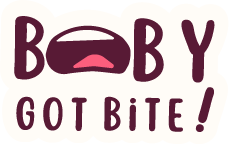Treatments
Our philosophy is that the body is an interconnected system where symptoms are often windows into deeper imbalances.
We believe in going beyond symptoms to understand the root cause and tailoring our treatment plans to address the underlying root cause. Once the root cause is addressed and the body is supported, we often see the body start to bring itself back to balance and heal.
Dr. Ghormley has a vast depth of medical experience allowing her to pull first-hand experience from many modalities and select those that best suit the patients needs. We strive to empower patients through education, investigation of any underlying root causes and advocating for preventative measures.
Below are a few of the conditions we treat and the modalities we find most effective:
Infants
Neurological development; primitive reflex, vagal tone, oral restrictions (lip and tongue tie)
GI dysfunction (infant reflux, constipation)
Specialized in:
Primitive Reflex Evaluation and Integration
Pediatric Sacral Occipital Technique (PSOT)
CO2 laser for frenectomies- Baby Got Bite program (learn more)
Craniosacral therapy (CST)
Children
Ages 2 – 18 years old
Neurological development and dysfunctions (i.e. – ADHD, PANDAS, sensory processing, on the spectrum)
Airway and maxillofacial development due to fascia and oral restrictions along with GI dysfunction (Constipation or irregular bowels)
Specialized in:
Primitive Reflex Evaluation and Integration
Pediatric Sacral Occipital Technique (PSOT)
CO2 laser for frenectomies (learn more)
Craniosacral therapy (CST)
Visceral Manipulation
Physiotherapy
Sensory Motor Room
Naturopathic Manipulative Technique (NMT)
Adults
Ages 18 and on
Neurological dysfunctions – airway, behavioral relating to anxiety and depression; Oral restrictions impacting sleep.
ENT dysfunction – relating to ringing in the ears (tinnitus), balance issues (dizziness; vertigo) sinus congestion and headaches
GI dysfunction- Constipation, diarrhea, pH balance
Pelvic floor dysfunctions –
Women: urinary incontinence; prolapse and chronic infections such as bacterial and yeast infections
Men: erectile dysfunction
Specialized in:
Primitive Reflex Evaluation and Integration
Naturopathic Manipulative Technique (NMT)
Cranial Facial Release (CFR)
Sacral Occipital Technique (SOT)
Biocranium
CO2 laser for frenectomies (learn more)
Craniosacral therapy (CST)
Visceral Manipulation
Physiotherapy

